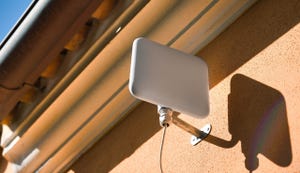ITU seeks $100 billion to close digital divide
The ITU marked this year's World Telecommunication and Information Society Day (WTISD) with the launch of an ambitious new fundraising effort.
May 19, 2023

The ITU marked this year’s World Telecommunication and Information Society Day (WTISD) with the launch of an ambitious new fundraising effort.
The UN’s telco agency wants to increase the targeted value of pledges to connect what it refers to as the world’s least developed countries (LDCs) from $30 billion to $100 billion by 2026 – a not insignificant amount of money.
The fundraising is managed by Partner2Connect, a UN multi-agency programme to connect the unconnected. While $30 billion has already been pledged, so far only $12 billion worth of concrete commitments to spend that money on actually tackling the digital divide have been made.
“Tech is at the top of the global agenda, but the benefits of digital technology are still out of reach for too many people,” said ITU Secretary-General Doreen Bogdan-Martin, in a statement on Thursday. “If we are serious about digitalising the world in a way that is meaningful and sustainable, we must take action to accelerate digital transformation for everyone.”
If $100 billion sounds like a lot of money, that’s because it is. By way of comparison, the EU’s Connecting Europe Facility – which supports the deployment of trans-European networks and infrastructure in the transport, telecoms and energy sectors – comes in at €2.07 billion. The Digital Europe programme – which funds things like AI, supercomputing, digital transformation, cybersecurity and digital skills and so-on – has a budget of €7.6 billion.
This is pocket change next to $100 billion, but if anything, it only serves to highlight the yawning digital divide between Europe and LDCs.
According to the ITU, in 2022 there were still 2.7 billion people worldwide with no Internet access. 27 percent of those people – around 720 million – live in LDCs, which are defined as having low levels of income and face what the ITU calls “severe structural impediments to sustainable development.”
What’s more, of the world’s 46 LDCs, the Internet is considered to be affordable in just two of them.
In addition, the gap between LDCs and developed markets is getting bigger, as the latter push on with improving coverage, and deploying fibre and 5G. According to the ITU, when it comes to the share of people who use the Internet, the difference between the LDC population and the rest of the world increased from 27 percentage points in 2011 to 30 percentage points in 2022.
There is also a notable gender gap. Globally, 63 percent of women used the Internet in 2022, compared to 69 percent of men. However, the gap is wider in lower-income nations, where 21 percent of women are online compared to 32 percent of men, and what’s more, that statistic has not improved since 2019.
The digital revolution is a defining force of our era,” said UN Secretary-General António Guterres. “As the Internet becomes ever more central to value creation and innovation, least developed countries risk falling further behind. We must dramatically improve accessibility and inclusivity and eliminate the digital divide.”
Get the latest news straight to your inbox. Register for the Telecoms.com newsletter here.
About the Author
You May Also Like










.png?width=300&auto=webp&quality=80&disable=upscale)


_1.jpg?width=300&auto=webp&quality=80&disable=upscale)